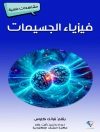Sound knowledge of the latest research results in the thermodynamics and design of thermoelectric devices, providing a solid foundation for thermoelectric element and module design in the technical development process and thus serving as an indispensable tool for any application development.
The text is aimed mainly at the project developer in the field of thermoelectric technology, both in academia and industry, as well as at graduate and advanced undergraduate students. Some core sections address the specialist in the field of thermoelectric energy conversion, providing detailed discussion of key points with regard to optimization.
The international team of authors with experience in thermoelectrics research represents such institutes as Ensi Caen Université de Paris, JPL, Cal Tech, and the German Aerospace Center.
Daftar Isi
Preface
THERMODYNAMICS AND THERMOELECTRICITY
Milestones of Thermoelectricity
Galvanomagnetic and Thermomagnetic Effects
Historical Notes on Thermodynamic Aspects
Basic Thermodynamic Engine
Thermodynamics of the Ideal Fermi Gas
Linear Non-Equilibrium Thermodynamics
Forces and Fluxes in Thermoelectric Systems
Heat & Entropy
The Thermoelectric Engine and its Applications
Thermodynamics and Thermoelectric Potential
CONTINUUM THEORY OF TE ELEMENTS
Domenicali’s Heat Balance Equation
Transferred Heat Balance
Ioffe’s Description and Performance Parameters of CPM Devices
Maximum Power and Efficiency of a Thermogenerator Element
Temperature Dependent Materials
The Influence of Contacts
Dissipative Coupling between the TEG and the Heat Baths
Shaped Thermoelectric Elements
Other Influences on the Performance of TE Devices
SEGMENTED DEVICES AND NETWORKING
Segmented Devices
Networks
TRANSIENT RESPONSE AND GREEN’S FUNCTION TECHNIQUE
Quasi-Stationary Processes
Supercooling with a Transient Peltier Cooler
Transient Behavior of a Thermoelectric Generator
Laser Flash Analysis
Classical Ioffe Method
Green’s Function Approach in Thermoelectricity
Linear Transient Approach
Time Dependent Green’s Function Approach
COMPATIBILITY
Relative Current Density and Compatibility Factors
Compatibility and Segmented Thermogenerators
Reduced Efficiencies and Self-Compatible Performance
Power-Related Compatibility
Optimal Material Grading for Maximum Power Output
The Criterion ‘u=s’ and Calculus Variations
Self-Compatibility and Optimum Material Grading
Thermodynamic Aspects of Compatibility
Analytic Results for Self-Compatible TEG and TEC Elements
Thermoelectric Thomson Cooler
Compatibility Approach vs. Device Optimization
NUMERICAL SIMULATION
Finite Difference Methods
Finite Volume Method
Finite Element Method
Performance Calculation of a TEG – A Case Study
Nonlinear Material Parameters
Appendix: Numerical Data and Illustrative Cases
Tentang Penulis
Christophe Goupil is professor at the Ecole Nationale Supérieure d’Ingénieurs in Caen, France. His research interest spans from experimental studies of vortices in the so-called high-Tc superconductors to theoretical thermodynamics. Professor Goupil has extensive experience in collaborative research with industrial partners, including major energy suppliers and companies of the automotive industry. He holds several patents. As expert in thermoelectric systems and thermodynamics of thermoelectricity, Professor Goupil currently pursues and develops his research activities at the Laboratoire Interdisciplinaire des Energies de demain at the Paris Interdisciplinary Energy Research Institute.












